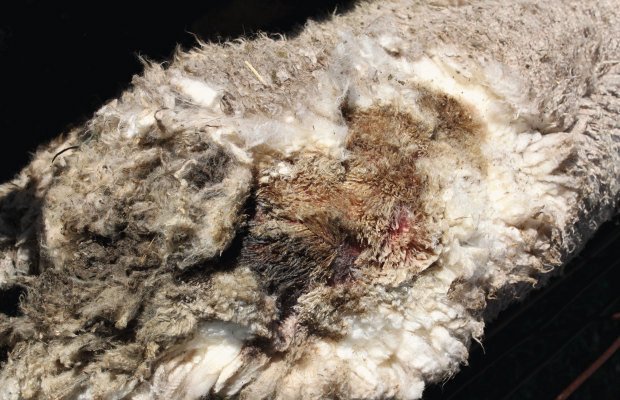Southland contractor Lachie McCall is in no doubt about why so far this summer he has dipped five times the number of sheep for flystrike that he normally does.
It is due to the longer tail required to be felt at tailing, McCall said.
McCall said normally he would have dipped 50,000 sheep by the end of February.
By that date this year he had dipped 260,000 due to the greater prevalence of flystrike hitting sheep of all ages, all wool length and on all parts of their bodies.
He said the longer minimum tail length introduced in 2021 is creating a major issue, allowing more faeces to accumulate – and that attracts flies.
In one mob he crutched 300 sheep struck around the tail. In a second mob of older sheep that had shorter tails, he treated two.
The aggressive Australian green blowfly arrived in Otago and Southland several weeks earlier than usual, compounding the problem.
Scott Chittock of Otago-based Chittock Dipping has also been busier than usual. He said flystrike has progressively worsened each year to the point where it is now as much an issue in the south as it is in the North Island.
Farmers need to be alert and proactive, he said.
Chittock agreed that the longer tail length is accentuating the problem, especially in lambs.
“It’s not a fly swat that works,” he said.
The regulations require sheep being tailed under six months of age to have their tails no shorter than the distal end of the caudal fold. It is recommended that the tail be long enough to cover the vulva in ewes and a similar length in rams.
Donna Hamilton, a vet with Vet South in Gore, advises farmers to check their rams, which can end up with open wounds from fighting at this time of the year and become susceptible to strike.
Ewes that have been struck over summer can struggle to get back in lamb, she said.
Justin Muschamp, a vet with Vetco in Edendale, said from previously selling very little product to treat or prevent fly strike, in recent years they have been struggling to keep up.
A series of warm, humid summers could make this the new norm for southern farmers, he said.
Dean Rabbidge, chair of meat and wool with Southland Federated Farmers, said he has also heard anecdotally that the longer tail length is adding to the problems.
He shore all his sheep in early January as a preventative measure and said other farmers are doing the same.
His Otago counterpart, Logan Wallace, dipped his short-woolled sheep in early February, and said a series of hot southern summers could make flystrike prevention an annual requirement for southern farmers.
Wallace has adopted the longer tail length for several years and said he has not noticed any more dags.
Dr Carolyn Guy, the Ministry for Primary Industries’ director of animal health and welfare, said the aim of the regulations is to clarify who can carry out surgical procedures and how they should be done.
It has been recommended practice since 2005 and is comparable with requirements of some of New Zealand’s trading partners, she said.
Flystrike can result from factors in addition to tail length, such as climate, diet and nutrition, parasites influencing the consistency of dung, breed of sheep and length of wool.
“This summer has been particularly warm and wet in some areas of the country, which can increase the likelihood of flystrike,” Guy said.
Research has shown that fly strike risk is increased by having a tail either too long or too short, which is why the regulation settled on an intermediate length.
Will Halliday, Beef + Lamb NZ’s senior adviser on biosecurity and animal welfare, said ideal weather patterns mean flystrike is more widespread, earlier and harder hitting this summer.
He said hot, dry and humid weather has created greasy wool, an ideal environment for blowflies.
Halliday said he has not seen evidence longer tails add to flystrike, saying there is research that this actually reduces urine staining, which can attract blowflies.
“I’m hesitant to say there is a link.”










